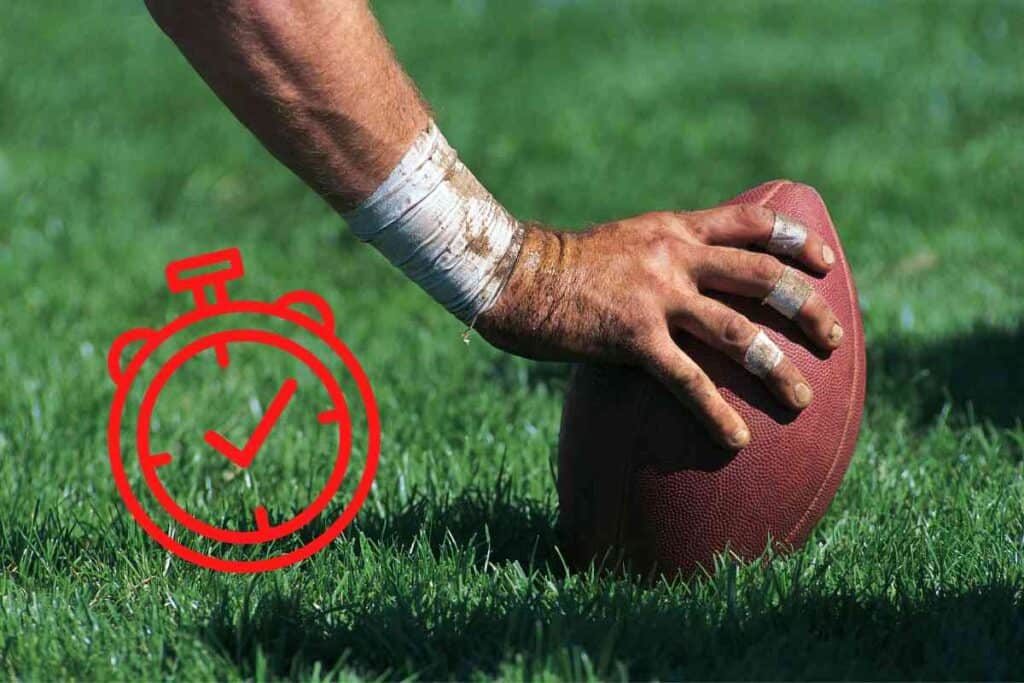Newsmatro

Clock adjustments aim to cut down on plays for player safety
In a significant shift that has gone relatively under the radar, the NCAA has introduced a rule change for the upcoming college football season aimed at reducing players’ potential injury exposures. Unlike the attention-grabbing touchdowns and highlight-reel tackles, this rule change may slip past the casual fan’s notice, but its impact on the game could be profound.
Starting this season, the clock will continue to run, similar to the NFL, when a team makes a first down on a play that stays inbounds. The clock will only stop during the last two minutes of the second and fourth quarters. This marks the first alteration to this rule since 1967.
The primary motivation behind this change, according to national supervisor of officials Steve Shaw, is player safety. The goal is to decrease the number of plays in a game, thus reducing the potential for injuries. Shaw clarified that the intention is not necessarily to shorten the average college football game, which currently takes approximately 3 1/2 hours to complete.
The importance of this rule change becomes more apparent as the College Football Playoff expands. In the 2024-25 season, the playoff will increase from four to 12 teams, with the possibility of further expansion in the future.
The NCAA Football Rules Committee estimates that this rule adjustment will trim approximately seven or eight plays from the average of around 180 plays per game in 2022. Over a 12-game season, this translates to potentially saving 96 injury exposures per team. For teams advancing to the playoff, there could be over 100 fewer injury exposures.
This rule will be implemented across all NCAA levels, with the exception of Division III, which has been granted a delay until 2024.
Despite initial concerns, Steve Shaw expects any consternation regarding the rule to subside over time, much like changes to blocking-below-the-waist rules did last year. Shaw emphasized that fans are unlikely to notice the change during the heat of the game, and it will likely only be apparent when reviewing final statistics.
In addition to the clock rule, a couple of other changes address the pace of play. Teams are now prohibited from calling consecutive timeouts during the same dead-ball period. Also, an untimed down following a penalty that occurs as time expires in the first and third quarters will now carry over to the following quarter.

Coaches have varying opinions on how these changes will impact the game. Some, like North Carolina’s Mack Brown and Maryland’s Mike Locksley, are concerned that fewer plays will reduce opportunities for player development, especially for backups. However, the impact on reserve players largely depends on how the game unfolds and whether the score is close.
On the other hand, some coaches, like Oklahoma State’s Mike Gundy, see an opportunity to strategically manage the clock in the fourth quarter, particularly when attempting to protect leads. Gundy has emphasized upgrading his team’s run game in light of the new rule.
For Texas’ Steve Sarkisian, the rule change underscores the need for players, particularly quarterbacks, to heighten their awareness of potential clock management adjustments late in the second and fourth quarters.
While opinions among coaches vary, Big Ten coordinator of football officials Bill Carolla humorously pointed out that the chain crews, often comprised of former players or officials looking for a front-row seat to the action, might be the ones most affected by this rule change as they scramble to keep up with the faster pace.